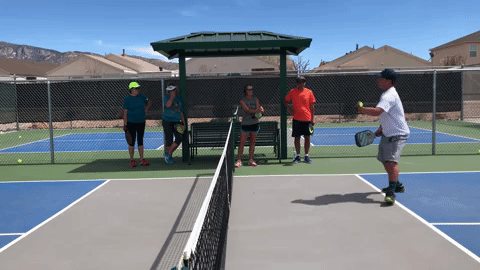Welcome to the third edition of For the Coaches. The theme this time centres on the psychological side of helping your players — or yourself — perform. This could be in a professional athletics setting or it could be in an environment that is more recreational. I have seen countless times where players underperform compared to what I know their capabilities are. They ‘get tight’ or ‘choke’.
This is often in a competitive setting (i.e. a tournament) but isn’t always so: I have seen players underperform when their skill level is being evaluated. I have seen people collapse under the pressure of having a certain person watch them play. Whatever you want to call it, the experience can be really tough for both the player and the coach. And in this edition of For the Coaches, we are going to talk about what you can do to combat it.
All PCI members are eligible to receive 6 months of free premium access to Pickleball Teachers Network (PTN). Advertise your clinics, let students post reviews, connect with other coaches.
What Causes ‘Choking’?
Serves that go long. Returns that go wide. An easy dink that hits the tape instead of sailing cleanly over the net. These are all potential examples of symptoms of choking but they don’t really tell us what is causing the problem in the first place. If you were to ask a player who is experiencing a poor performance what is going on, they might offer the following:
I’m nervous
I’m tight
I really want to win
I feel pressure
But even these answers don’t really get to the root of the problem; these are symptoms of a problem, not causes. The common thread that all of these symptoms share is that they are the result of FEAR.
FEAR
Choking is almost always a sign that the player is fearful of something.
There are many things that players might be afraid of: fear of looking bad; fear of losing; fear of not moving to another level; fear of embarrassment; fear of having wasted one’s time; fear of letting down a partner. And if we are talking about professional players, there is fear of losing out on money; fear of not meeting expectations of sponsors; fear of less status in the pickleball world, etc..
So as a coach, if we want to help our players perform better under pressure, we have to address the sense of fear they are feeling. How do we do that? Click to audio file below to listen to some options.
Teaching Tip: Belly Button Rule
When demonstrating something yo your players, position them so they can always see your belly button. This will make it more likely they can see and hear you.
Training with Consequences
If you want your players to perform as well in matches as they do in practice, it is important that you find ways to replicate the feelings players have “when it counts”. One way to do this is to make sure that you introduce consequences as part (not all) of your practice sessions. Since real game play has a consequence for missing (i.e. you lose the point) it is important that players feels some pressure during training. Here are a few examples we’ve seen coaches use:
set a goal for the number of consecutive shots a player has to make. Count out loud and as they get closer to the target number, raise the volume of your voice emphasizing how close they are getting.
use modest wagers related to their performance (i.e. losing team has to pick up all the balls after practice).
create incentives that reward performance (i.e if you make this next backhand drop I’ll buy you a cold drink after we’re done).
when a team is close to accomplishing a goal, stop everyone else and have the group watch to see if they accomplish it.
Coaches need to be careful about how and when they use these tools. It should never be done as a way of embarrassing players or humiliating them. Remember, it is about solidifying their ability to succeed in different conditions. It is a good idea to have a conversation about why you might use this strategy in practice sessions and seek their consent (i.e. I want you to be able to perform under pressure. So I’d like to find ways to simulate that a little in practice. Are you ok with that?). It is also important to make sure that the goals are achievable so that the players have a reasonably good — but not guaranteed — chance for success.
An easy way to help your players become better returners is to get them to stand back behind the baseline; this will give them more time to set-up for the ball. Players should only stand on the baeline if they have good reason to believe the serve will be short (i.e. a habit of the server or wind in the server’s face).






